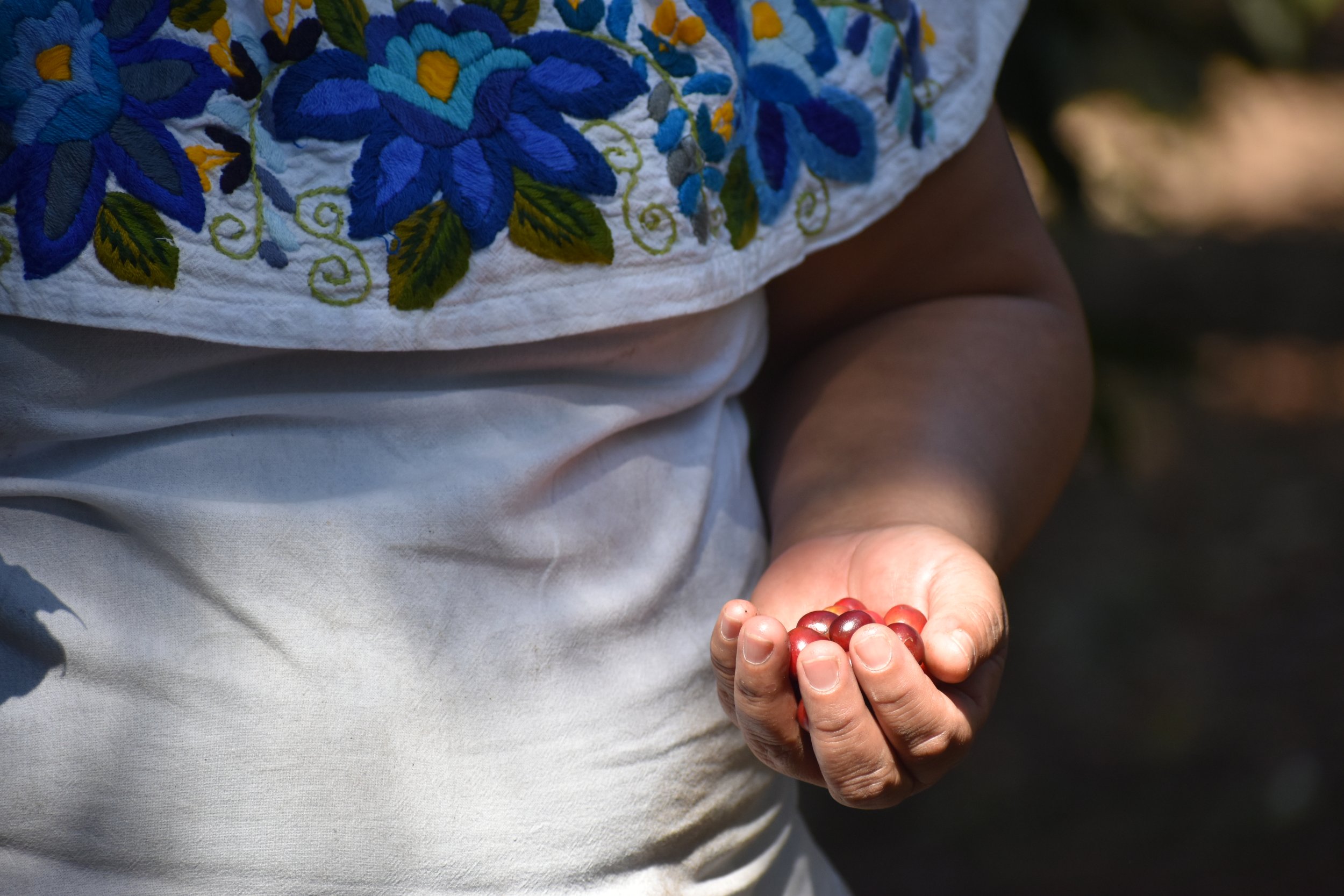
What a Change in Coffee Prices Means | De La Gente’s Sustainability Efforts in the Coffee Supply Chain
Recently, there has been a shift in output levels of green coffee beans, causing the price of Arabica coffee beans on the C market to increase. This shift in the global coffee supply directly impacts our partner cooperatives and buyers. With the coffee C market failing to support sustainable growth for coffee producers, De La Gente offers assistance through a trusting support system and a reliable coffee supply chain – providing a loan program, training, and direct market access.

Pricing Arabica Coffee Beans: A Consumer’s Guide to the Coffee C Market
Behind the scenes of understanding coffee, the price of arabica coffee beans, specifically un-roasted coffee, can be complicated. But why? How exactly is the price of coffee determined? In this article, we’ll discuss the coffee C market and uncover some of the factors that drive the prices of Arabica coffee beans to rise and fall.

Where Hope Lies | Migration’s Impact on Coffee Communities
Economic factors related to the constantly changing coffee prices and limited access to financing have impacted the coffee industry. The coffee sector has not been providing a reliable source of income and many smallholder farmers have struggled to compete in the global coffee market, which is dominated by larger producers. This has resulted in people having less of a desire to live in rural communities, leading to people migrating away from coffee-growing regions. Increased production costs combined with lack of labor has added even more pressure towards finding a solution, and quickly.

Coffee Cupping Insights | What It Is and Why It’s Important
Coffee is a complex beverage in terms of flavors, which can be tasted simultaneously or over time. Coffee’s taste can vary dramatically with temperature and according to the genetics of the seed in how it’s grown, processed, stored, roasted, and so on. In evaluating and classifying specific qualities of coffee, a tasting method called coffee cupping is utilized.

Coffee Origin Trips | Furthering Sustainability in Guatemalan Coffee Communities
The focus of coffee origin trips is for coffee professionals to be part of an immersive travel experience involving visiting regions where coffee is grown and produced. De La Gente’s origin trips are now called “cultivating relationships,” which seek to connect professionals in the supply chain, so you can learn more about where coffee comes from.

Diving into the Coffee World: Specialty Coffee Beans Explained
In a few words, specialty coffee is a type of coffee selected and harvested with greater care and attention. These beans have a superior quality and produce more unique flavors than regular coffee. In this article, we will explain why specialty coffee beans are so complex and exciting, but also not as complicated as they sound. We will also explain who and what determines the quality of coffee for it to be considered specialty coffee.

Guatemalan Washed Process Coffee from the Producers' Perspective
Washed process coffee is the most common of all processes and, thus, the easiest to find at grocery stores and coffee shops all around the world. From the consumer perspective, this favoritism could be because of a cleaner coffee and consistency in flavors from harvest to harvest. In this article, we’ll learn more about the washed process coffee from the producer’s perspective and understand their preferences when processing their coffee.

Peculiarities of Guatemalan Natural Processed Coffee
The natural process begins after the fully ripe coffee fruits have been harvested. In Guatemala the harvest is done by hand without the use of machines. After the harvest, they are immediately put to dry on drying patios or raised beds under the sun for about two weeks. The result of drying the entire fruit with all of its layers and sugars is an intense earthy and fruity flavor.

Sun-Grown vs. Shade-Grown Coffee: How It Impacts the Environment and the Farmers
Just as there are two main kinds of coffee, Arabica and Robusta, there are two main methods of coffee cultivation, sun- grown and shade-grown. Shade-grown coffee is the more traditional approach that mimics the natural way coffee used to grow, underneath a forest canopy. Beginning in the 1970’s the idea of growing coffee in full sun was introduced to coffee farmers with the intent to increase production.

Women Who Inspire Inclusion | Women Caficultora Network Project
At De La Gente, we work with many women who inspire inclusion on a daily basis working as coffee producers, mothers, wives, and sometimes, as head of households. In a perfect world, having a career in coffee or any other job would be perfectly normal, but in the case of the members of the Women Caficultora Network Project by De La Gente, that’s not the case.

